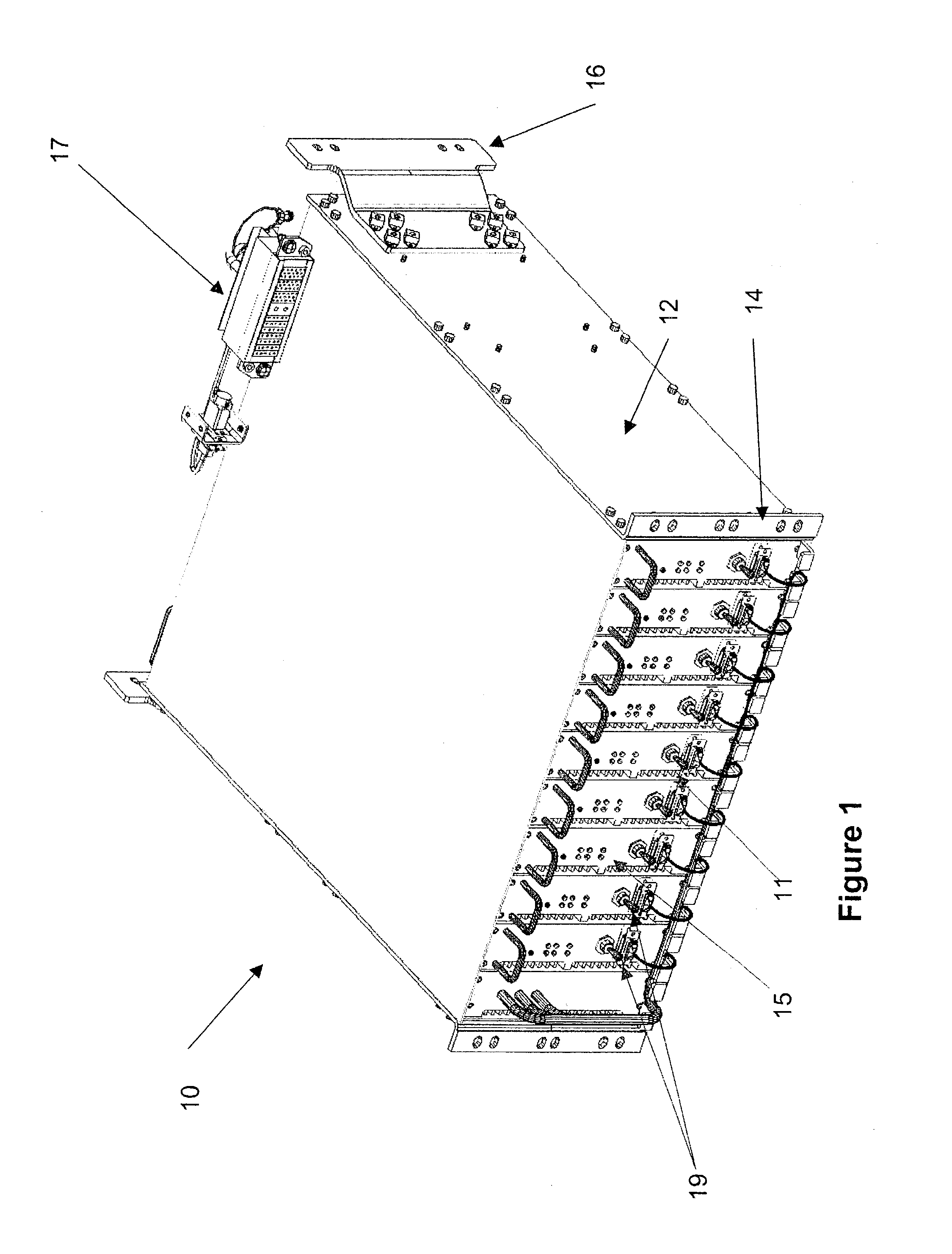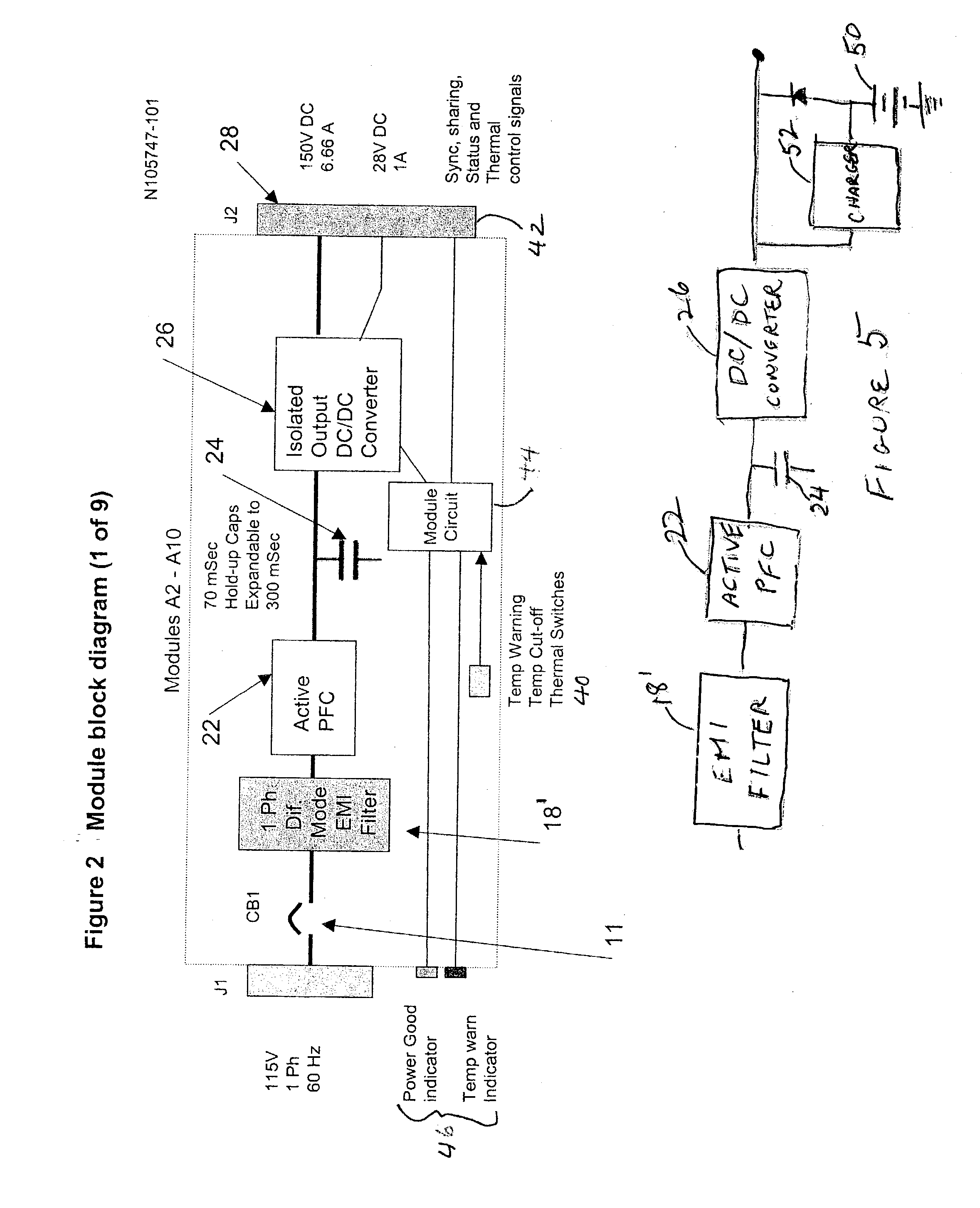Power processor
a power processor and processor technology, applied in the field of electric power supplies, can solve the problems of severe requirements for uninterrupted power, computer and other sophisticated electronic devices subject to malfunction, and the inherently subject of failure of the apparatus,
- Summary
- Abstract
- Description
- Claims
- Application Information
AI Technical Summary
Benefits of technology
Problems solved by technology
Method used
Image
Examples
Embodiment Construction
[0022] Referring now to the drawings, and more particularly to FIG. 1, there is shown, in perspective view, a preferred physical form of the power processor 10 in accordance with the invention. This embodiment of the invention is intended to have a nominal power supply capacity of 6.0 KiloWatts (kW) and a maximum power supply capacity of 9.0 kW at a DC output voltage of one hundred fifty volts. Preferably, in view of the projected applications of the invention in mobile machines, the power processor is packaged in hardware suitable for standard rack mounting which advantageously provides for convenient and standardized cooling arrangements as will be discussed in greater detail below. However, neither the packaging nor the details of the cooling arrangement is critical to the successful practice of the invention. Electrical connections such as output connections 17, module input power via 19 or connections on the rear of the housing 12 can be made at either the front or back side of...
PUM
 Login to View More
Login to View More Abstract
Description
Claims
Application Information
 Login to View More
Login to View More - R&D
- Intellectual Property
- Life Sciences
- Materials
- Tech Scout
- Unparalleled Data Quality
- Higher Quality Content
- 60% Fewer Hallucinations
Browse by: Latest US Patents, China's latest patents, Technical Efficacy Thesaurus, Application Domain, Technology Topic, Popular Technical Reports.
© 2025 PatSnap. All rights reserved.Legal|Privacy policy|Modern Slavery Act Transparency Statement|Sitemap|About US| Contact US: help@patsnap.com



